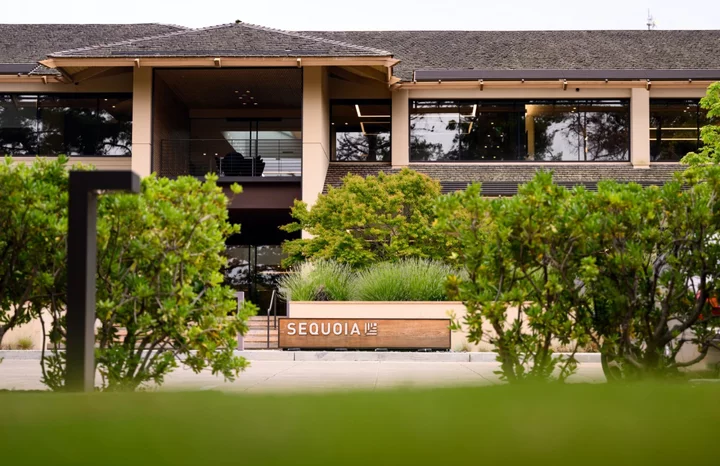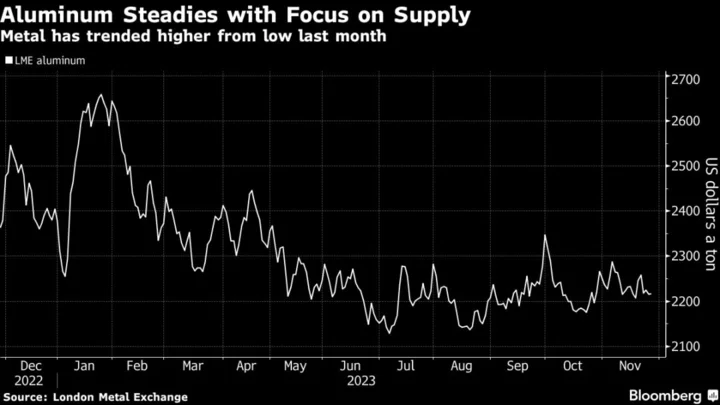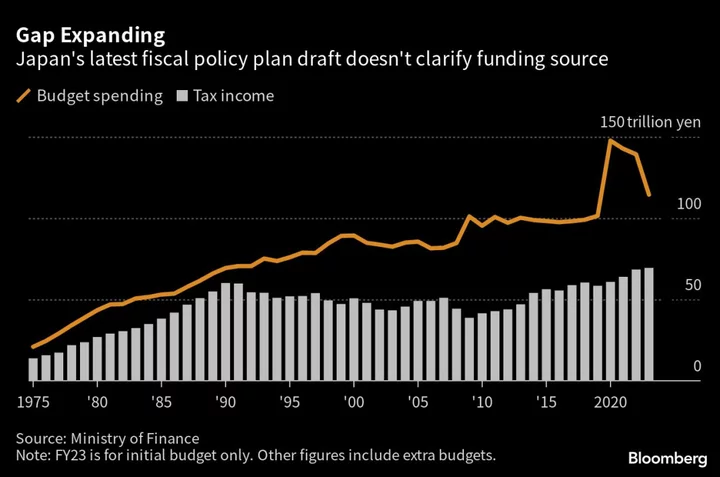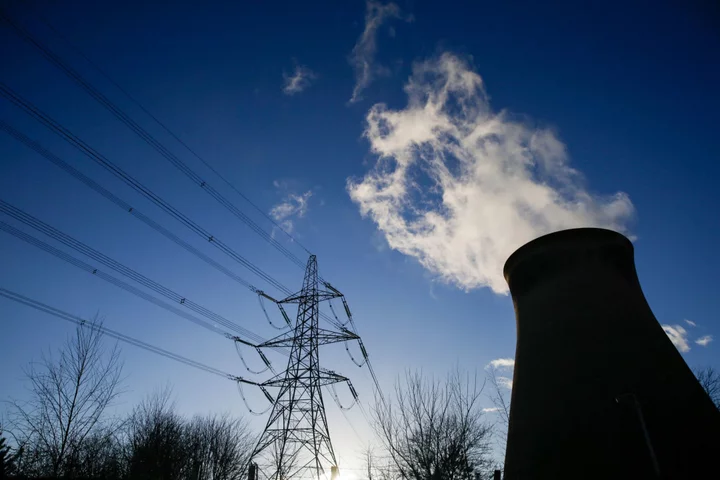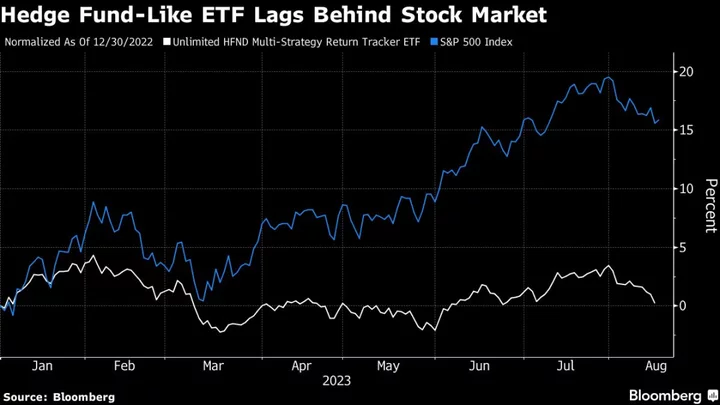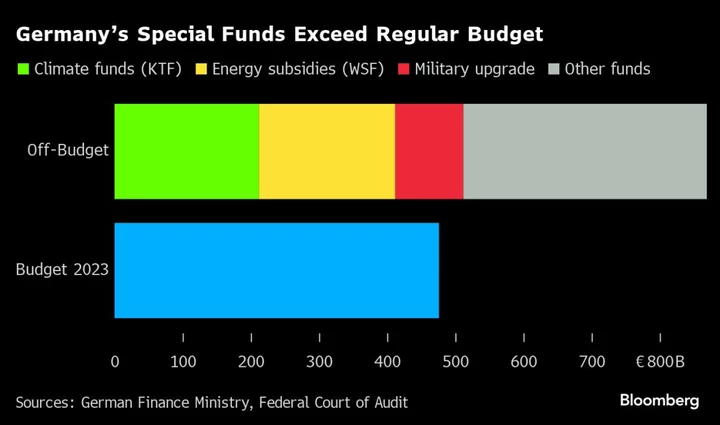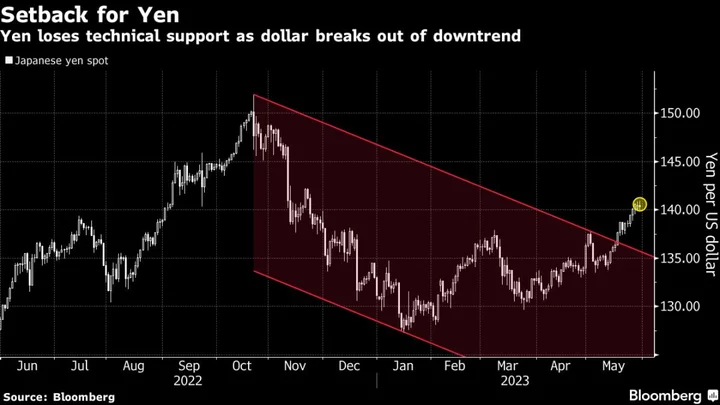The venture capital giant formerly known as Sequoia China is slated to host a major gathering of investors this month. The annual meeting is a kind of coming out party for HongShan, which formally split with Sequoia in June, and has $56 billion under management.
But a dismal climate for startups and ratcheting geopolitical tensions mean that the stakes are unusually high as HongShan rolls out its new brand.
The firm’s early returns on some funds are weaker than when China’s tech scene was booming, according to reports from existing investors with Sequoia China. It’s also under fresh scrutiny from the US government, which is cracking down on American involvement in Chinese companies. And some past investors are no longer with the firm, even as new ones sign on.
A spokesperson for HongShan said the November meeting is routine for the firm, and pointed to a long history of returns for limited partners (LPs), the firms’ investors. “We communicate regularly with our limited partners. This includes in-person meetings,” the spokesperson said. “HongShan has a strong track record of performance over numerous fund cycles, which is why LPs continue to invest with us.”
It’s still too soon to judge the recent performance of the firm’s newer funds — venture funds typically operate on a decade-long lifecycle and often show initial losses because of their fee structure. But some of its early results reflect the larger weakness in the VC markets. One Sequoia China fund raised in 2020 — the flagship Sequoia Capital China Venture Fund VIII — is down 3.6% on an annual basis through June 30, according to returns posted online by the University of California, an investor. Another fund also raised in 2020, Sequoia Capital China Growth Fund VI, is up 0.6% on an annual basis, the university’s website shows.
Sequoia China funds raised in 2018 are better, with one fund rising about 18% annually, and two others posting annual returns of 4.9% and 2%. From the beginning of 2018 through June 30, annual returns for the Nasdaq Composite Index were about 14%.
The weakness is part of a larger startup slump. After a long stretch of outperforming the market, an index tracking VC returns fell 10% in the 12 months ending June 30, according to research firm Cambridge Associates. That contrasts with a comparable rally of about 27% for the Nasdaq, Cambridge Associates found. The investing climate is particularly difficult in China, where HongShan operates. The country has seen only $44.09 billion in deals so far this year, according to PitchBook data, down 65% from the full year in 2018. For deals that involved US-based venture firms, the pullback was even starker — deals fell 95% in that period to just $2.21 billion.
At the same time as HongShan contends with startup market tumult, it’s also subject to increasing scrutiny from the US government around Chinese technology investments. In August, President Joe Biden issued a long-anticipated executive order imposing screening for US investments in Chinese companies in some sectors. And in October, a US congressional committee sent Sequoia Capital a letter asking for information about its China investments, calling out several as “problematic” for security or human-rights reasons.
The letter reflected a long-running rift between the US and China that has dissuaded some investors from investing in the country more broadly. Disclosures for the Alaska Public Fund show it has not invested in Sequoia China funds since around 2020, when it committed about $42 million to two different vehicles. Reached for comment, Allen Waldrop, the director of private equity for the Alaska Permanent Fund Corp., said that the organization did not discuss its investment strategies. But “if you are reviewing our website, you will note that we haven’t invested in any China-focused investment funds in several years,” he added.
Despite political tensions and mixed returns, several new investors have signed on with the firm. The California Public Employees’ Retirement System, the pension fund run by the state of California, committed to Sequoia China for the first time last year — agreeing to invest in all four of the latest China funds the firm was then raising, according to its reports. CalPERS recently boosted its allocation to private equity to 13% from 8%, a category which includes VC.
Other new investors include the pension manager for the state of Massachusetts, which committed as much as $150 million to Sequoia China’s four latest funds last year. Also in 2022, the University of Washington Investment Management Co. dedicated a total of $50 million to three Sequoia China funds, according to publicly available reports. And the Canadian Pension Plan, an existing investor, has continued to add to its commitments, including $257 million in three of Sequoia China’s latest funds.
Representatives for the organizations did not answer more detailed questions about their investments.
The University of California Regents, which invests on behalf of the university system’s endowments, has also continued to invest in with Sequoia China. The university holds investments in nine Sequoia China funds, according to its list of holdings as of June 30. Those include the most recently raised seed, venture and growth funds. A university spokesperson declined to comment on its holdings.
During the boom times, Sequoia China had awe-inspiring returns. Created in 2005 by Sequoia Capital partners Doug Leone and Michael Moritz, plus entrepreneur and former investment banker Neil Shen, who still leads the firm, it quickly ascended to a dominant position. Sequoia China was an early investor in companies like JD.com Inc., Meituan and Pinduoduo Inc., which soared as China’s tech scene exploded. Since then, Chinese investors have been forced to contend with new regulations on tech enacted by the Chinese government, limiting the once sky-high upside for investors — although the restrictions now appear to be easing.
“It’s shaping up to be a more challenging environment,” compared with the earlier heyday, said Donna Hitscherich, director of the private equity program at Columbia Business School. “There are more challenges when you’re looking at international, and there are more challenges when you’re looking at international markets with the specter of Washington.”
Partly in response to the growing geopolitical chasm between the two superpowers, Sequoia split into three brands in a surprise announcement in June. The firm in Silicon Valley is still called Sequoia Capital. Another in Southeast Asia now called Peak XV Partners. And Sequoia China is now HongShan. The three units had long made independent investment decisions while sharing many investors and some back office functions. Effective by March 31, they’ll operate completely independently.
But the split won’t keep the firm from facing scrutiny, particularly because many of its investors are based in the US. The October letter from the US Select Committee on China expressed some dissatisfaction with Sequoia Capital’s formal separation from HongShan. “It is not clear whether the split will in fact staunch future flows of American capital to problematic PRC companies,” the congressmen wrote.
A person familiar with HongShan’s thinking says the firm plans to maintain its risk and compliance protocols, including prohibiting investments in businesses that violate human rights and those with military involvement.
Sequoia is far from the only venture firm fielding inquiries from Congress. In June, the Select Committee sent GGV Capital, GSR Ventures, Qualcomm Ventures and Walden International similar letters asking about various investments in China and Chinese investors in their funds.
But the committee’s letter to Sequoia was the only one that asked for information on US investor funds backing Chinese startups. The letter asked for the total number of US investors in Sequoia China funds and the amount invested. It also asked how risks tied to national security and human rights are communicated to investors. The potentially embarrassing questions could unsettle some investors, for example, if any stated risks are at odds with broader goals of the US investors, many of which are philanthropic organizations or universities.
Although the questions related to China investments, the letter was addressed to Sequoia Capital in the US. A representative for the firm declined to comment for this article. In October, the firm said it was reviewing the letter and would respond.
HongShan is the market leader in China, said one longtime investor, who asked not to be identified discussing private information. And as long as the US government’s policy looks favorably on working with the country, this investor will stick with the firm. If the US government decides that the right policy toward China is to stop engaging, he said, his firm would stop.

